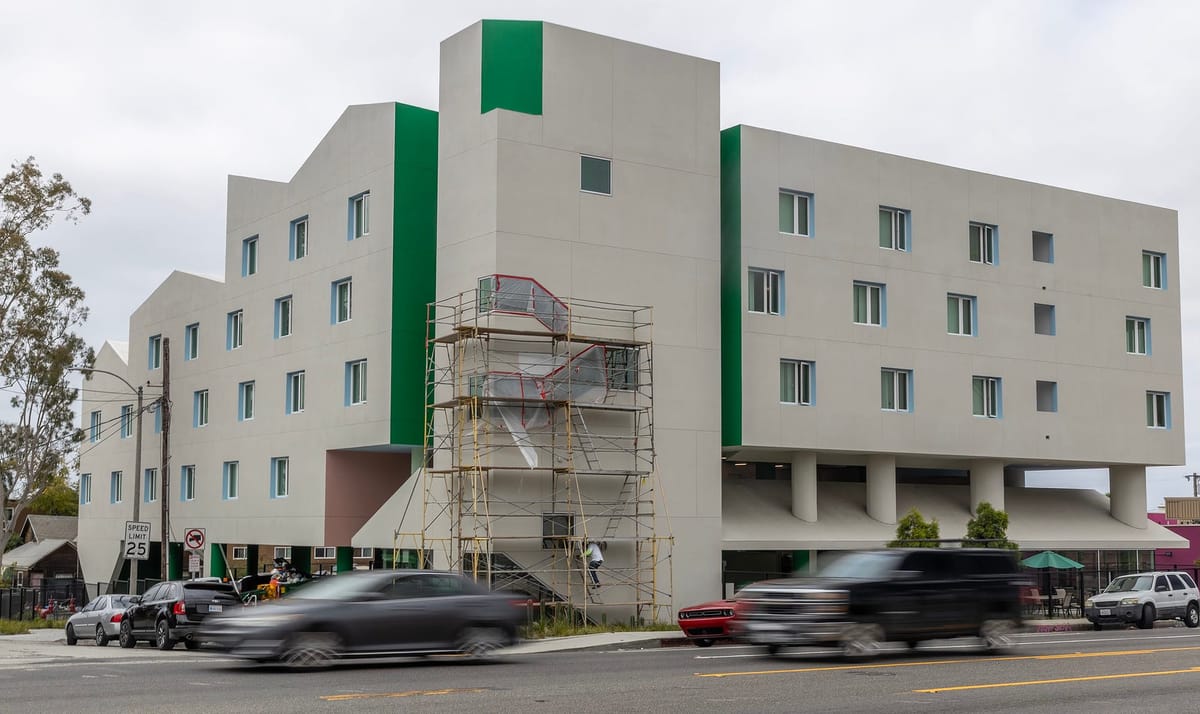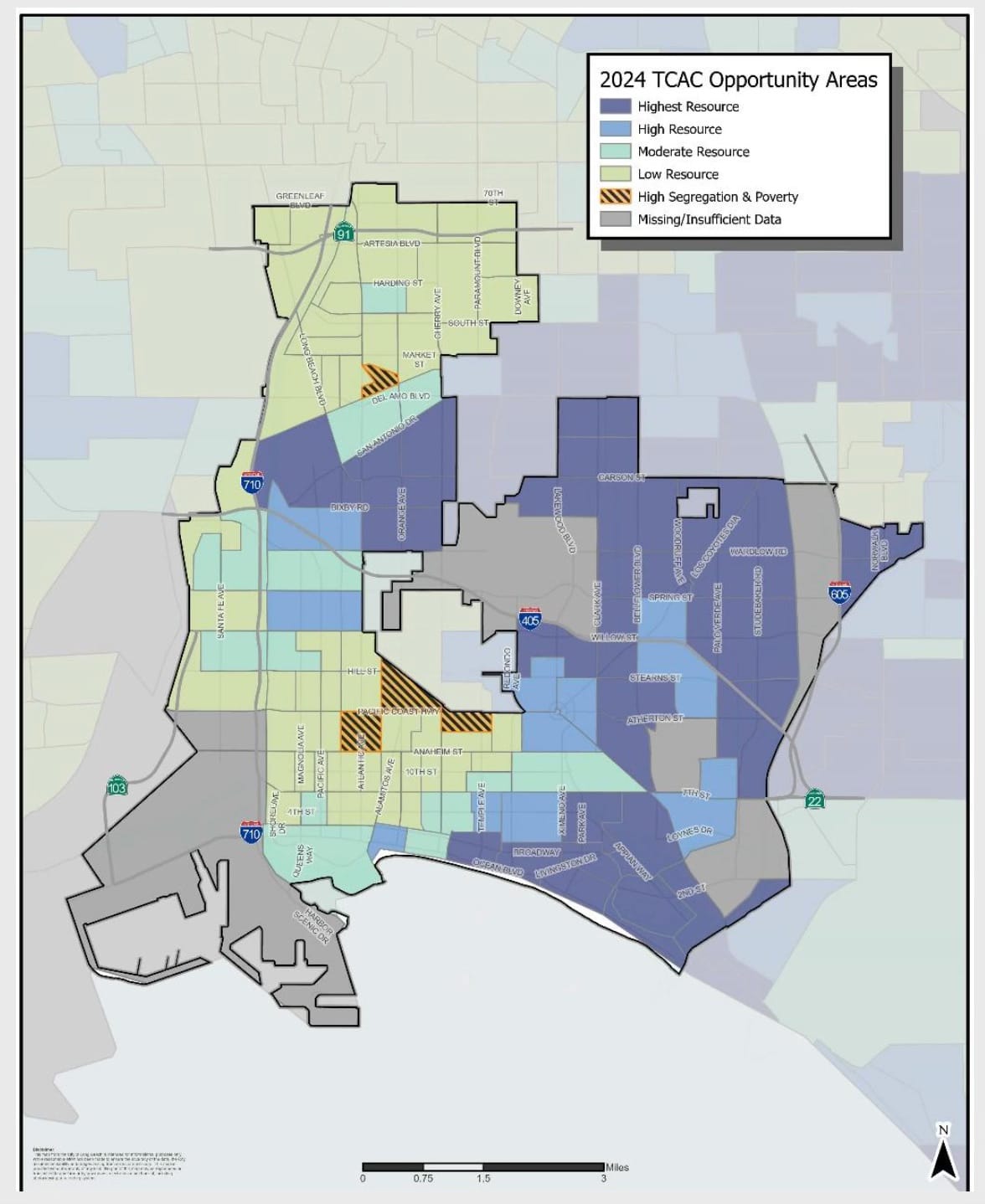Council committee hears options for expanding affordable housing mandate in Long Beach
The proposals heard by a City Council committee Tuesday could see affordability rates as high as 19% in some communities if the council approves it later this year.

With the Long Beach City Council showing a willingness to expand the city’s mandate for developers to build affordable units, a council committee was presented with options Tuesday that include a model that would require more low-income housing in “high resource” communities and more moderate-income units in those with less resources.
Community Development Director Christopher Koontz told the Housing and Public Health Committee that the city is trying to ensure that the proposed policies make sure that poverty doesn’t become concentrated by ensuring mixed-income projects are distributed citywide but also create moderate-income housing, something that currently lacks funding mechanisms.
“We’re trying to find a policy that balances those goals all at once,” Koontz said.
The full council asked for city officials to look at expanding the law earlier this year and asked city staff to look at diversifying the existing policy to create multiple levels of affordability within new construction projects.
Long Beach adopted the ordinance in 2021 but the affected areas are limited to Downtown and parts of midtown along Long Beach Boulevard. It requires 11% of new construction units to be set aside for lower-income households.
City officials have previously said that just 168 affordable units have been built or entitled since 2021.
The proposed changes would only apply to new projects that haven’t been approved prior to when the new law goes into effect and the rules for ownership units would remain untouched other than a new requirement that only first-time homebuyers would be eligible to buy any new affordable units for sale.
Jason Ruiz has been on strike from the Long Beach Post since March 21, yet he’s still covering city hall without pay. Thank him for his reporting.
Stephanie Harper, an affordable housing project manager with the city, said Tuesday that one option would be to take the existing 11% requirement and simply expand that to the rest of the city. Another would break up the requirement with 3% of units being set aside for very-low-income and low-income households and another 6% for moderate-income households for a total of 12% of all units.
The state income limits for a family of four this year are $69,350 (very-low-income), $110,950 (low-income) and $117,860 for a moderate-income household.
But the staff recommendation that Harper said could be most equitable would be to have the type of affordable units be dictated by where they’re being built. Under that model, a new project in a high-resource area, those with the best parks, schools and environmental conditions, like most of East Long Beach, would require 11% for very-low-income households.
Projects built in a moderate resource area like Downtown, northern Bixby Knolls and areas around Recreation Park could be required to set aside 6% of units for very-low-income households and 3% each for low-income and moderate-income households.
New units built in a low-resource neighborhood, or those with high poverty and segregation rates, would have to set aside 19% of those for moderate-income households. Koontz said that approach would help foster inclusive communities and align with state mandates to advance fair housing mandates.
The resource level designation of each neighborhood is based on state designations.

Whatever option the council approves would be phased in over three years except for the areas that already have the inclusionary housing policy in place, Koontz said.
Committee members seemed supportive of expanding the policy but some questioned what an appropriate new threshold should be given that the current requirement is 11% and one of the policy options would require as much as 19% affordability in certain neighborhoods.
Koontz said that because the 19% affordability mark is for moderate-income households, developers could charge higher rents than they could for lower-income renters and it should pencil out. He said the the City Council has legal authority to increase the current policy to 15% but advised against it.
“If you were to pick a number higher than the scenarios here, you’d get fewer projects which means you’d get fewer units even though it’s at a higher rate,” Koontz said.
The policy work is far from done as the department told the committee that community meetings are expected to be held throughout the summer with one planned to be held with developers and another with the community before a study session with the city’s Planning Commission.
That session is tentatively scheduled for Aug. 15 and a potential public hearing where the commission could forward the issue to the City Council for approval could happen as soon as Sept. 19, according to the presentation given Tuesday.
The City Council could potentially vote on expanding the inclusionary housing policy citywide by Nov. 12. If passed, the new law would go into effect at the start of 2025.
Long Beach Watchdog is a reader-supported publication. To receive new posts and support our work, please consider subscribing.
We need your support.
Subcribe to the Watchdog today.
The Long Beach Watchdog is owned by journalists, and paid for by readers like you. If independent, local reporting like the story you just read is important to you, support our work by becoming a subscriber.





